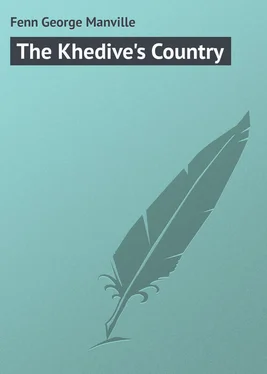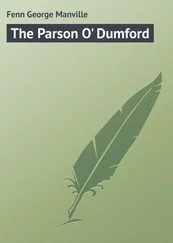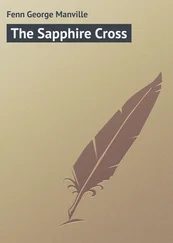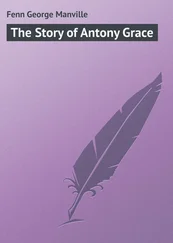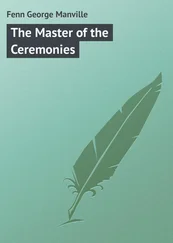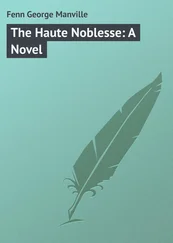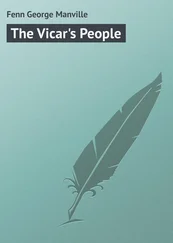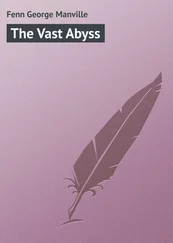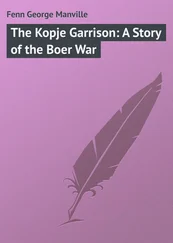George Fenn - The Khedive's Country
Здесь есть возможность читать онлайн «George Fenn - The Khedive's Country» — ознакомительный отрывок электронной книги совершенно бесплатно, а после прочтения отрывка купить полную версию. В некоторых случаях можно слушать аудио, скачать через торрент в формате fb2 и присутствует краткое содержание. Издательство: Иностранный паблик, Жанр: foreign_prose, Путешествия и география, на английском языке. Описание произведения, (предисловие) а так же отзывы посетителей доступны на портале библиотеки ЛибКат.
- Название:The Khedive's Country
- Автор:
- Издательство:Иностранный паблик
- Жанр:
- Год:неизвестен
- ISBN:нет данных
- Рейтинг книги:3 / 5. Голосов: 1
-
Избранное:Добавить в избранное
- Отзывы:
-
Ваша оценка:
- 60
- 1
- 2
- 3
- 4
- 5
The Khedive's Country: краткое содержание, описание и аннотация
Предлагаем к чтению аннотацию, описание, краткое содержание или предисловие (зависит от того, что написал сам автор книги «The Khedive's Country»). Если вы не нашли необходимую информацию о книге — напишите в комментариях, мы постараемся отыскать её.
The Khedive's Country — читать онлайн ознакомительный отрывок
Ниже представлен текст книги, разбитый по страницам. Система сохранения места последней прочитанной страницы, позволяет с удобством читать онлайн бесплатно книгу «The Khedive's Country», без необходимости каждый раз заново искать на чём Вы остановились. Поставьте закладку, и сможете в любой момент перейти на страницу, на которой закончили чтение.
Интервал:
Закладка:
One thing that strikes the European in Egypt, when passing beyond the more carefully cultivated portions near the city, is the absence of trees other than the indigenous palms; but here, in these newly-reclaimed portions, much has been done, as already mentioned, in the way of planting. For instance, the approaches to a range of buildings in connection with this farm were studded with acacias, ornamenting what proved to be the pigeon houses which are such a regular adjunct to an Egyptian cultivator’s home. Their occupants bear a strong resemblance to our own blue rocks, or wood pigeons. Another building was the dairy farmhouse, well-built, simple, and most suitable; while in the neighbouring fields the cows were pasturing after the economical plan carried out in our Channel Islands – where each milk-producer is not allowed to wander through and waste the precious herbage at her own sweet will, but is tethered to a stake – while the calves had an enclosure to themselves. Here were many examples of experiments being tried to improve the breed, the favourite animal being a cross between the Swiss – Fribourg – and native; and in this cross-breeding only those proved to be advantageous are retained. Such as do not show some marked advance upon the native stock, either for breeding or the production of milk, are sold.
One very fine sire was close at hand – a Swiss bull with a noble head and short curved horns, fine and long of coat, which about brow and neck formed itself into short, crisp curls like those that cluster upon the brow of the classic Hercules. This grand animal greatly resembled, save that it was much larger, one of the choice and jealously guarded patriarchs of a Jersey cattle-shed; while his home-like aspect was added to greatly by the familiar ring in the nose, which is not considered necessary for the native animals.
A little farther on were those rather uncouth-looking, heavily-horned animals, the buffaloes, which run side by side in Egyptian estimation with the ordinary cattle for all practical purposes. The improvement in their breed is also studied by the addition of fresh blood and the choice of sires remarkable for special qualities. One particularly good specimen was pointed out, distinguished by the heavy hump forward, a fine beast lately brought from the Soudan.
There are two distinct breeds of buffalo utilised in this country – the productions of Upper and Lower Egypt, those from the latter district being reckoned the better.
In this portion of the farm and around the buildings fruit trees were plentiful, diversifying the scene and adding greatly to its attractiveness, and looking novel to a visitor from Europe, who saw an abundant growth of the Seville or bitter orange, and the cool, greeny-grey picturesque olive of Southern Europe and the East.
Among other fruit trees seen here were some bearing long pods, called chiar shambar by the natives. The fruit of these trees, which is long and green, but which turns black soon after picking, seemed at a distance like a huge bean, suggesting that the fruit was akin to the carob or locust bean, this idea being emphasised by the sweet glutinous pulp in which the seeds were buried. This pulp is pleasant to the taste, but slightly bitter, and is largely used by the natives boiled up with water, as a drink on account of its medicinal qualities.
Taken all in all, the visit to the Khedive’s farm was most attractive, and pregnant with proofs of the fertility of the well-tended land, for on every side were examples of the successful culture of many of the agricultural products treated of in detail from the notes of the student-like superintendent, who has all in his charge.
The place, as before said, may be regarded as a model and example of what can be done with land that has been looked upon for ages as so much desert, when all that was required was industry, application, and the ingenuity necessary for extending the action of the Nile flood. Nature has always been ready to do the rest.
The Khedive has another tract of farm land, which he purchased some time back, about two kilometres from the estate just described, at Koubbeh. This is Mostorod, where he has a simple-looking villa. On the way here one of the first things that attract the attention of an Englishman is that home-like contrivance so often missing in foreign countries – a hedge dividing the fields from the roadway and separating them from each other. These were unknown before the time of Abbas Helmi the Second, and what may be done in time to come in the surroundings of farms by means of the simple, well cut back hawthorn remains to be proved. Here the shrubby growth, chosen for its neat form and comparatively rapid development, is the bitter orange.
At Mostorod many of the surroundings are marked by the energetic proceedings of the practical farmer. Here steam is at work, like the patient slave it is, forming the motive power in one case for raising water for all farming purposes, in another setting in action the mills, which rapidly turn out and clean the meal ground from wheat and Indian corn.
Buildings are here containing the various grains and seeds; others are the storehouses for one or other of the three pickings produced in the cultivation of cotton; and at the entrance of every building, just inside the door, there is a pitch pine wood frame, with its glass covering, and a paper on which is a record of the amount and nature of whatever is brought in or taken out of the building in the shape of corn, cotton, seed, or whatever may be stored.
Here, in opposition to much that is modern, there is a large, old-fashioned Egyptian stable, very thick of wall. The building is divided into two chambers, connected and lit from overhead, the light coming through the roof of wood and rafters thickly thatched with reeds.
These rafters are supported by thick round columns formed of the ancient, sun-dried brick for which Egypt has long been famed. Near by something of the old-world fashion of the place was visible in a typical grinding mill such as may be seen in common use in pretty well every village. It had a chamber to itself, and differed little from those which might have been seen in England fifty or a hundred years ago, set in action by an often blindfolded horse, but here worked by a bullock.
Ornamentation is not wanting at Mostorod, for the villa has its garden brightened by fruit trees, and the pillar-stemmed palms, with their leafy crowns, are frequent objects in the transparent, sunny air.
Close at hand is the village on the Khedivial estate. In it the streets are narrow and the houses of one height, thoroughly waterproof, and of the familiar construction, of sun-dried bricks covered with white plaster, and, being of an earlier date in the improvement the Khedive is striving for in the poorer class dwellings, not to be compared with the spick and span new houses he has lately had erected at Mariout, not far from Alexandria.
Hard by this village is a very large barn or stack yard with more native pigeon houses, the whole of the surroundings being extremely quaint and picturesque.
Again, a short distance onward stands the native village of Mostorod, with its attractive little mosque and a tomb erected to the memory of a saint.
The Ismailia Canal supplies water to the Koubbeh and Mostorod estates, and in this neighbourhood is a good deal of very valuable agricultural land, some portions of which are let to the fellaheen for three months in a year, so as to enable them to grow a crop of maize.
Hereabouts, tethered in the clover fields, a herd of the Khedive’s camels are pastured, many of these being bred for carrying purposes, others (the slighter of build) for riding and speed. The scene is attractive from its verdure, but comparatively treeless, though it is worthy of mention that two solitary weeping willows do their best to adorn the landscape – a plain with the suggestions of home in the shape of lapwings, or birds bearing a very strong resemblance, which fly up here and there.
Читать дальшеИнтервал:
Закладка:
Похожие книги на «The Khedive's Country»
Представляем Вашему вниманию похожие книги на «The Khedive's Country» списком для выбора. Мы отобрали схожую по названию и смыслу литературу в надежде предоставить читателям больше вариантов отыскать новые, интересные, ещё непрочитанные произведения.
Обсуждение, отзывы о книге «The Khedive's Country» и просто собственные мнения читателей. Оставьте ваши комментарии, напишите, что Вы думаете о произведении, его смысле или главных героях. Укажите что конкретно понравилось, а что нет, и почему Вы так считаете.
